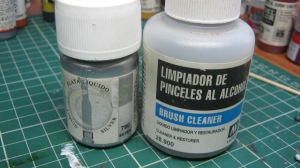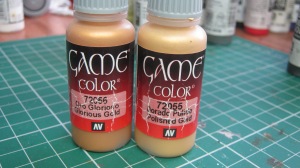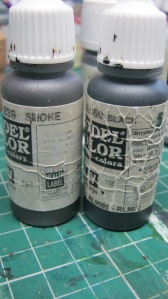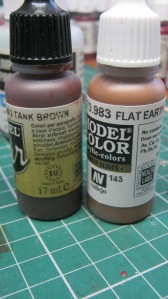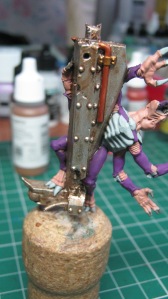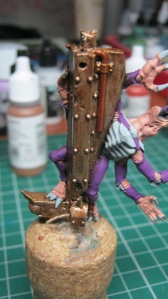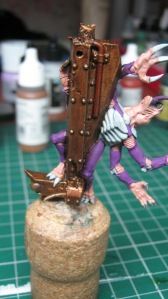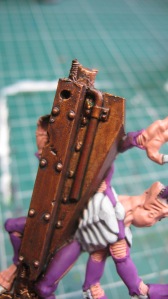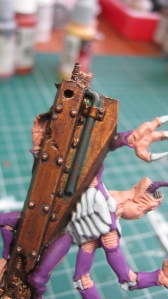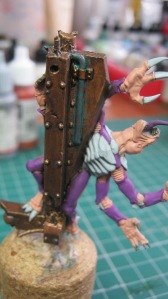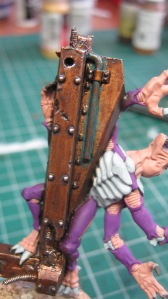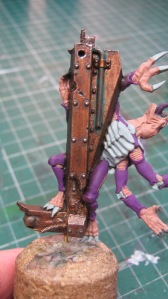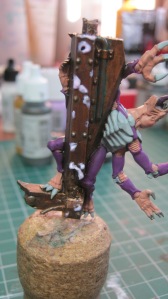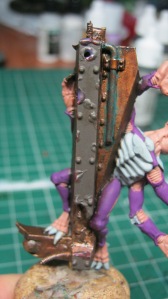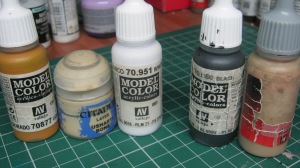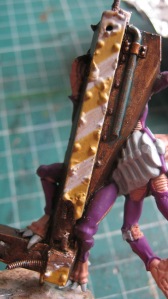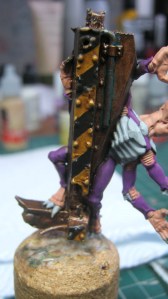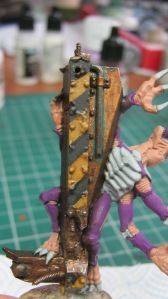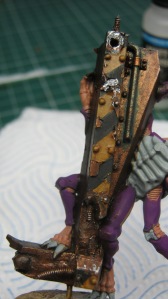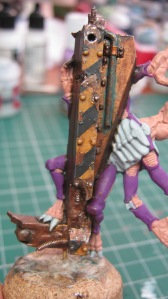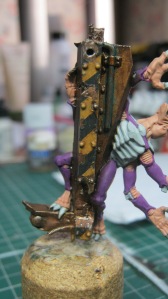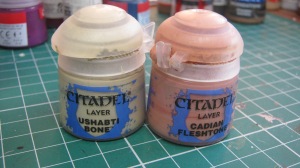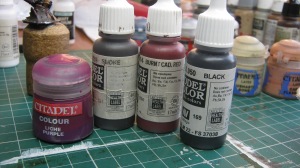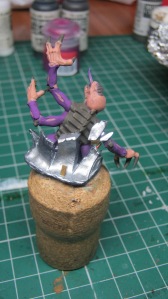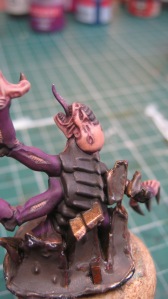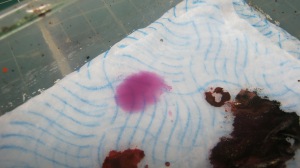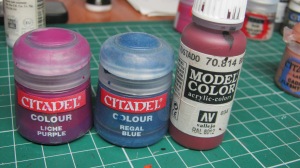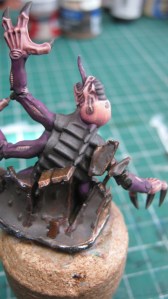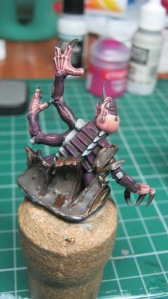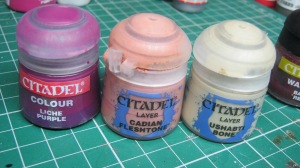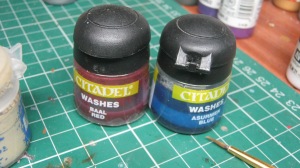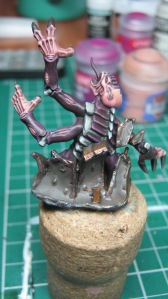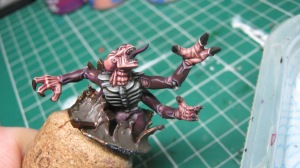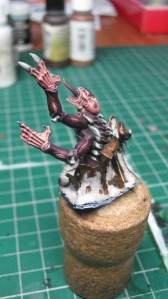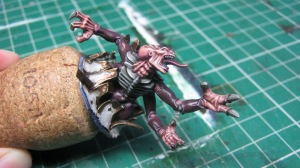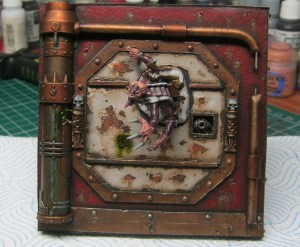How to paint metals.
I don’t really like painting metallics, because they’re so fiddly. To simplify matters, I tend to use alcohol-based paints to provide the basecoat, as they provide an even coverage in 1-2 coats; whereas regular water-based metallic paints require at least half a dozen. It is quite difficult to apply, however, and you need alcohol brush cleaner to clean your bristles; so I only use it on large areas, with a cheap painting brush.
These were the colours used – the Vallejo liquid silver as the base:
Regular metallic paints to cover smaller elements – such as the copper pipe; and to highlight areas.
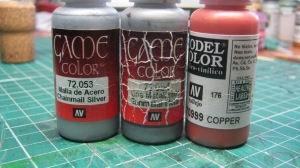
Gold for the brackets:
Smoke and Black to shade:
Flat earth and tank brown to create rust-effects:
Green, turquoise, and rotting flesh to create a verdigris effect:
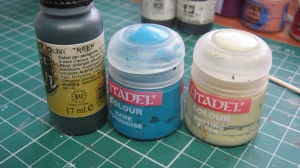
I also use Leviathan purple to glaze silver areas – but this is purely optional.
Basecoat the metal areas:
To weather the metal, apply several thin washes of Smoke; leaving each one to dry before painting the next layer:
You can see how each layer gradually deepens the colour:
Paint a glaze of black over the whole area:
To create a verdigris effect, paint a wash of dark green over the copper pipe:
Add turquoise to this, and blotch it over the pipe – keeping the mix watery:
Add rotting flesh to the dark green/turquoise mix, and paint this on in patches:
Highlight the copper pipe by stippling-on copper (as it happens, the verdigris effect was a bit vivid, so I glazed it with smoke later on):
Edge highlight the metal areas with the gunmetal silver, stippling it on to the bolts; then highlight the corners/edges of bullet holes and scratches with chainmail:
I decided to paint yellow/black hazard bandings over the metal beam. So, add patches of masking fluid:
Paint over this with dark brown (Vallejo’s USA Olive Brown here):
These were the colours used to paint the bandings:
Basecoat the metal beam golden yellow; then plot out the bands:
Overcoat these with black:
Wash the whole area with several thin layers of Smoke:
Highlight by stipling goldbrown onto the yellow bands; and black + khaki (2:1 ratio) onto the black ones:
Remove the masking fluid:
Edge highlight: the yellow areas with goldbrown + ushabti bone; and add a bit more khaki to the black/khaki mix. Concentrate on the edges of the beam, the frays around the chipped areas, and the bolts:
Give the whole area a thin glaze of smoke; and use the tank brown/flat earth to create patches of rust:
To finish off, I glazed the whole area with matt-medium, which tied it together. Done.
Keep well.
